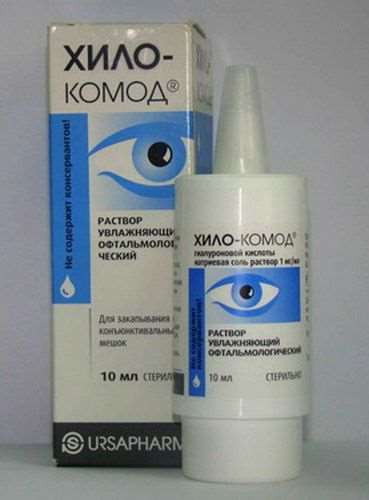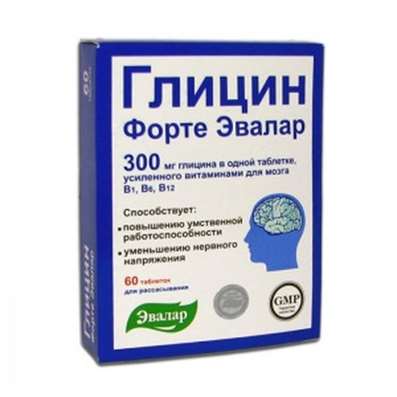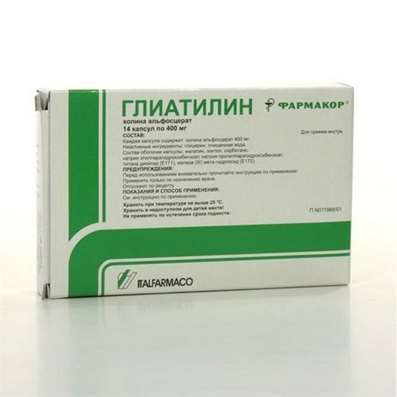Instruction for use: Chorionic Gonadotropin (Gonadotropinum chorionicum)
I want this, give me price
Chemical name
6- [O- (1,1-Dimethylethyl) -D-serine] -10-deglycinamidorylizing factor of luteinizing hormone (porcine) 2- (aminocarbonyl) hydrazide
Pharmacological group
Hormones of the hypothalamus, pituitary gland, gonadotropins and their antagonists
Nosological classification (ICD-10)
E23.0 Hypopituitarism
Kalmann's syndrome, Infantilism pituitary, Dwarfism is cerebral-pituitary, Cachexia pituitary, Cachexia diencephalo-pituitary, Anovulatory disorders, Symmonds disease, Secondary hypogonadism in men, Secondary hypogonadotropic hypogonadism, Hypogenitalism, Hypogonadism, Hypogonadism hypogonadotropic, Hypogonadism of the pituitary, Hypogonadism in men, Hypogonadotropic hypogonadism, Hypopituitarism, Pituitary insufficiency, Lack of growth in children with hypopituitarism, Pangypopituitarism, Primary hypogonadism, Primary hypogonadotropic hypogonadism, Shihan Syndrome, Shihina's Syndrome, Symmonds-Glinsky disease, Laron's dwarfism, Sheena's Syndrome, Syndrome of a fertile eunuch
E23.6 Other pituitary diseases
E28.3 Primary ovarian failure
Hypogonadism of the ovary (primary), Hypofunction of the ovaries, Estrogen deficiency, Insufficient estrogen content in the body, Insufficiency estrogenic, Insufficiency of estrogens, Primary dysfunction of the ovaries, Estrogen-deficient conditions
E29.1 Testicular function
Leydig cell aplasia, Hypogonadism testicular (primary), Androgen deficiency, Eunuchism, Insufficiency androgenic, Reduced function of the sex glands, Androgen insufficiency, Insufficiency of testosterone, Hypoplasia of the testes, Hypofunction of gonads in men, Insufficiency of androgens in men, Insufficiency of Leydig cells
N46 Male infertility
Azoospermia, Asthenospermia, Infertility, Infertility male, Marriage is infertile, Dispersion, Violations of spermatogenesis, Oligoastenozoospermia III-IV stage, Oligoastenospermia, Oligozoospermia, Oligospermia, Disorders of testicular functions, Spermatogenesis disorders, Inhibition of spermatogenesis, Yang syndrome
N93 Other abnormal bleeding from the uterus and vagina
Atonic uterine bleeding, Prolonged menstruation, Blood loss during menstruation, Bleeding from the genitourinary system, Bleeding uterine dysfunctional, Bleeding from the genital tract of organic etiology, Uterine bleeding, Menorrhagia with fibroids, Functional uterine bleeding, Abnormal bleeding from the genitals in women
N94.9 Conditions related to female genital organs and menstrual cycle, unspecified
Menstrual discomfort
N96 Habitual miscarriage
Miscarriage habitual, Habitual abortion, Habitual miscarriage
N97 Female infertility
Female infertility in anovulation, Hyperprolactinemic infertility, Hyperprolactinaemia with infertility, Endocrine infertility, Infertility due to hypothalamic-pituitary dysfunction, Infertility infertility, Infertility, Infertility on the background of hyperprolactinaemia, Functional infertility, Marriage is infertile, Infertility of ovarian genesis, Stimulation of the growth of a single follicle
O20.0 Threatening abortion
Abortion threatening, Miscarriage abortive, A spastic condition with a risk of abortion, Threatening miscarriage in the first trimester of pregnancy, Threat of abortion, Threatening abortion, The threat of spontaneous miscarriage, A threatening spontaneous miscarriage
Q53 Unsubstantiation of the testis
Cryptorchidism
Q55 Other congenital malformations of male genital organs
Congenital anomalies of the genito-urinary tract, Congenital malformations of the kidneys and urogenital organs
Z31.1 Artificial insemination
Fence of egg, ICSI (Intra Cytoplasmic Sperm Injection), Controlled ovarian stimulation, Controlled superovulation, Controlled superovulation in artificial insemination, Treatment of insemination, Fertilization artificial, Premature ovulation, The IVF program, The program of in vitro fertilization, Superovulation
Code CAS9002-61-3
Characteristics
Water-soluble glycoprotein, produced by the placenta and obtained from the urine of pregnant women. White or almost white sterile lyophilized powder; Stable; In the form of a solution of tinctures.
Pharmacology
Pharmacological action - gonadotropic, luteinizing.
Interacts with specific membrane receptors (integral glycoproteins with a molecular weight of 194,000) gonad cells, activates the adenylate cyclase system and reproduces the effects of the luteinizing hormone of the anterior lobe of the pituitary gland. In women, it induces and stimulates ovulation, promotes rupture of the follicle and its transformation into the yellow body, incl. In assisted reproductive methods; Increases the functional activity of the yellow body in the luteal phase of the menstrual cycle, lengthens the time of its existence, delays the onset of the menstrual phase, enhances the production of progesterone and androgens, including. When the corpus luteum is deficient, facilitates implantation of the ovum and supports the development of the placenta. Ovulation is usually achieved after 32-36 hours after administration. In men, it stimulates the function of testicular cells of Leydig, enhances the synthesis and production of testosterone, promotes spermatogenesis, the development of secondary sexual characteristics and the lowering of testicles in the scrotum.
Well absorbed into the blood with the / m introduction. With systematic administration, the blood level gradually increases and by the 7th-12th day it exceeds the original level by 1.5 times. Has a two-phase T1 / 2 - 11 and 23 hours Eliminated by the kidneys, unchanged (10-12% dose for 24 hours).
Does not have a mutagenic effect. Dose-dependent increases the frequency of occurrence of external congenital anomalies in the offspring of mice. When administered to pregnant women, it can adversely affect the fetus.
Indications
Hypofunction of the gonads in hypothalamic-pituitary disorders: in women - infertility due to pituitary-ovarian dysfunction, incl. After preliminary stimulation of follicular maturation and endometrial proliferation, disturbance, including absence, of the menstrual cycle, dysfunctional uterine bleeding at childbearing age, inadequate function of the yellow body, habitual and threatening miscarriage in the first trimester of pregnancy, controlled "superovulation" in artificial insemination; In men - hypogonadotropic hypogonadism, phenomena of eunuchoidism, hypogenitalism, testicular hypoplasia, adiposogenital syndrome, disorders of spermatogenesis (oligospermia, azoospermia), cryptorchidism.
Contraindications
Hypersensitivity, incl. To other gonadotropins, hypertrophy or tumors of the pituitary gland, hormone-dependent tumors or inflammatory diseases of the genital organs, cardiac and renal insufficiency, bronchial asthma, epilepsy, migraine; In women - ovarian hyperstimulation syndrome or its threat, undiagnosed dysfunctional uterine bleeding, uterine fibroid, cyst or ovarian hypertrophy, not associated with its polycystosis, thrombophlebitis in the acute stage; In men - prostate cancer, premature puberty (for the treatment of cryptorchidism).
Restrictions for use
Polycystic ovary (for induction of ovulation), children under 4 years of age (safety and efficacy not determined).
pregnancy and lactation
During pregnancy, the probability of adverse effects on the fetus should be considered (according to data obtained when administered to pregnant women and experimental animals).
Side effects
From the nervous system and sensory organs: headache, irritability, anxiety, fatigue, weakness, depression.
Allergic reactions: a rash (such as hives, erythematous), angioedema, dyspnea.
Other: the formation of antibodies (with prolonged use), breast enlargement, pain at the injection site.
From the genitourinary system: in women - ovarian hypertrophy, ovarian cyst formation, ovarian hyperstimulation syndrome, multiple pregnancies, peripheral edema; In men - premature puberty, an increase in the testicles in the inguinal canal, which hinders their further lowering, degeneration of the gonads, and atrophy of the seminiferous tubules.
Interaction
In combination with menotropinami and urofollitropin increases the likelihood of pregnancy and premature birth, the severity of the syndrome of ovarian hyperstimulation.
Overdose
In women with ovulation induction - an acute syndrome of ovarian hyperstimulation (can occur spontaneously at the beginning of menstruation). Symptoms: sharp pain in the abdominal cavity (especially in the groin), nausea, vomiting, diarrhea, bloating, decreased diuresis, rapid breathing, swelling of the lower extremities, in severe cases - hypovolemia, thickening of the blood, electrolyte imbalance, ascites, peritonitis, hydrothorax , Acute pulmonary insufficiency, thromboembolic phenomena.
Treatment: temporary withdrawal of the drug, if necessary - hospitalization, the appointment of symptomatic therapy for correction of water-salt balance, blood clotting and other disorders.
Routes of administration
In / m.
Precautions
Treatment is carried out under the supervision of a qualified doctor who has experience in the therapy of endocrine disorders. When used for induction of ovulation, it is recommended to select the individual dosing regimen and its correction depending on the effectiveness, regular measurement of estradiol and progesterone concentrations in the blood serum, ultrasound of the ovaries, daily determination of the basal body temperature and observance of the sexuality recommended by the doctor. The development of hypertrophy or the formation of ovarian cysts requires a temporary cessation of treatment (to avoid rupture of the cyst), abstinence from sexual intercourse and a reduction in the dose for the next course. With significant ovarian hypertrophy or an excessive increase in the concentration of estradiol in the serum in the last 24 hours of treatment with menotropins or urofollitropine, induction of ovulation in this cycle is not performed. During infertility treatment in men, it is necessary to measure testosterone concentration in the blood serum before and after administration, to determine the number and mobility of spermatozoa. With premature puberty during the treatment of cryptorchidism, therapy is canceled and other methods of treatment are used. In the absence of the dynamics of lowering the testicle after the introduction of 10 doses, continued treatment is not recommended. Diagnosis of hypogonadism in young men under the control of testosterone concentration in the blood serum prior to administration and a day after the course of treatment (with normal testicular function, the concentration after therapy should increase by 2 times). Unreasonable increase in doses or duration of admission may be accompanied by a decrease in the number of sperm in the ejaculate in men.
special instructions
The solutions are prepared immediately before use on isotonic sodium chloride solution. It is necessary to take into account the probability of false positive results of immunological analysis on the content of endogenous CG and the possibility of increasing the concentration of 17-hydroxycorticosteroids and 17-ketosteroids in urine.

 Cart
Cart





